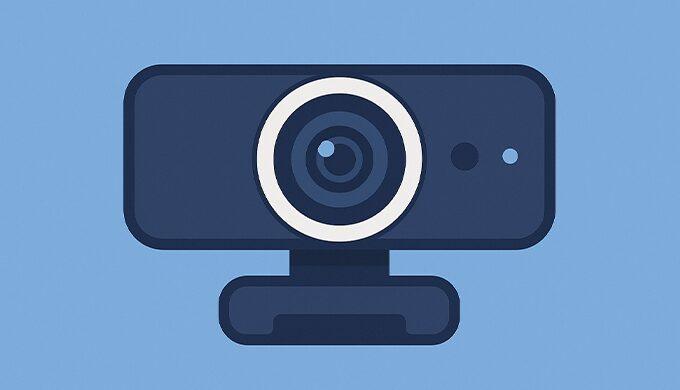The Ultimate Guide for Smooth Movement, Expressive Avatars, and Hassle-Free Streaming
目次 閉じる
- Introduction
- 1. Why Movement & Expressions Matter for Vtubers
- 2. 2025 Camera & Mocap Device Landscape: Types & Who Needs What
- 3. Streaming Styles: Recommended Gear & Price Brackets
- 4. How to Choose the Right Webcam in 2025
- 5. Using a Smartphone for Face Tracking (iPhone & Android)
- 6. Leap Motion & Hand Tracking: Next-Level Gesture Control
- 7. VR Trackers & Full-Body Mocap: Go Pro with Your Movement
- 8. AI & Software-Only Tracking: The Future?
- 9. Essential Setup, Lighting & Cable Management Tips
- 10. Streaming Software Integration & Troubleshooting
- 11. Real-World Streamer Stories & Advanced Tips
- 12. Planning Your Budget & Upgrade Path
- 13. Maintenance, Support & Keeping Your Setup Smooth
- 14. FAQ
- 15. Conclusion
Introduction
The Vtuber landscape in 2025 is more dynamic than ever. Creating a lively, expressive character isn’t just about your model—it’s about how naturally it moves and reacts in real time.
Viewers connect most with avatars that feel alive, whether you’re chatting, singing, gaming, or performing full-on dance routines.
But with all the new gear, software, and options out there, how do you pick the right camera or motion capture device?
This guide gives you a step-by-step roadmap: from entry-level setups to pro-tier gear, setup tricks, troubleshooting, and real streamer experiences—all in plain English.
1. Why Movement & Expressions Matter for Vtubers
A “talking head” is no longer enough.
- Natural movement (head tilt, blinking, gestures) draws viewers in.
- Expressive faces make your stream feel authentic and emotionally engaging.
- Hand and full-body tracking can unlock new creative formats (dancing, roleplay, tutorials).
Bottom line: The better your movement and expressions, the more likely you are to build a loyal fanbase and stand out—even if your art or model is simple.
2. 2025 Camera & Mocap Device Landscape: Types & Who Needs What
Key Device Types
- Webcams: Great for beginners or Live2D/2.5D avatars; affordable, plug-and-play.
- Smartphones (iPhone/Android): FaceID-powered iPhones enable advanced facial tracking; some Androids are catching up, but iPhone is the gold standard.
- Leap Motion & Hand Trackers: For realistic hand/finger gestures—especially for 3D avatars.
- VR Trackers (VIVE Tracker, etc.): For full-body movement—dance, standing streams, advanced gesturing.
- Full Motion Capture Suits: Professional level—captures every nuance, but expensive and complex.
2025 Trends:
- Many streamers use hybrid setups (e.g., webcam + Leap Motion; iPhone + VR tracker).
- AI-based tracking (using just a webcam) is improving but still not as fluid as hardware trackers for complex movement.
3. Streaming Styles: Recommended Gear & Price Brackets
Live2D/Chat/Singing/Game Streaming (Face + Basic Expressions)
- Recommended Gear: Webcam or iPhone with FaceID, PC, streaming software (OBS, Streamlabs, etc.)
- Budget Tiers:
- Entry ($30–$80): Logitech C270/C310 (basic but works)
- Mid ($90–$140): Logitech C920/C922/C930e (clear image, good colors); Razer Kiyo (built-in ring light)
- High-End ($180+): Elgato Facecam (pro-grade image, advanced controls)
- Pro Tip: Lighting is as important as camera quality—get a small LED ring light or panel.
Hand/Arm Movement (Live2D + Hand Tracking, 3D Light Movement)
- Recommended Gear: Leap Motion + Webcam/iPhone
- Budget: $100–$130 for Leap Motion; add webcam cost if needed
Full-Body/3D Dance Streaming
- Recommended Gear: VR Trackers (e.g., VIVE Tracker 3.0 x3+), VR headset (VIVE Pro, Valve Index, etc.), capable PC
- Budget: $700–$1,500+ (depends on tracker quantity & headset)
- Motion Capture Suits: $1,400 (Perception Neuron 3) to $4,000+ (XSens)
- Pro Tip: Room space matters! Full-body tracking needs at least 2m x 2m clear area.
4. How to Choose the Right Webcam in 2025
Key Specs
- Resolution: Full HD (1080p) minimum; 4K for future-proofing or professional needs.
- Frame Rate: 30fps+ is standard; 60fps preferred for fluid movement.
- Autofocus & Brightness Correction: Keeps your face sharp and visible in any light.
- Field of View (FOV): Wider angles can help with expressive movement.
Top Picks by Price
- Entry ($30–$50): Logitech C270/C310 (gets the job done)
- Mid ($90–$140): Logitech C920/C922 (industry staples), Razer Kiyo (integrated lighting)
- High-End ($180+): Elgato Facecam (top-tier for color, clarity, streamer tools)
- Emerging: Some brands now offer AI-powered background blur or “beauty” filters—useful for some streamers.
5. Using a Smartphone for Face Tracking (iPhone & Android)
iPhone (FaceID models: iPhone X or newer)
- Why: Best-in-class facial expression tracking; captures eyebrow, cheek, jaw movement.
- Apps: VTube Studio, Animaze, FaceMotion3D.
- Setup Tips:
- Use a stable stand; avoid holding your phone by hand.
- Lighting: Ring lights boost accuracy; avoid shadows on your face.
- USB connection is more stable than Wi-Fi (less lag, better reliability).
Android
- Status: Some apps offer basic tracking, but accuracy and compatibility vary.
- Options: VTube Studio (beta), Waidayo, some experimental solutions.
Budget
- iPhone 12+ (used): $350–$550
- Stands/Tripods: $15–$35
- LED Ring Lights: $30–$70
6. Leap Motion & Hand Tracking: Next-Level Gesture Control
- What It Does: Tracks hands and fingers in real time for Vtuber models.
- Best For: Cooking streams, drawing, magic tricks, or just more expressive gestures.
- Device Cost: $100–$130 for Leap Motion Controller (newer Leap Motion 2 offers better range/precision).
- Placement Tip: Position Leap Motion at the front edge of your desk for best tracking; keep it clean and free of obstructions.
- Software Integration: Compatible with VSeeFace, 3tene, Luppet, Unity, and more.
7. VR Trackers & Full-Body Mocap: Go Pro with Your Movement
VR Trackers
- Devices: VIVE Tracker 3.0, Valve Index Trackers.
- Setup: Usually need at least 3 trackers (waist, both feet) + base stations + VR headset.
- Cost: $100–$130 per tracker; VR headsets from $600 up; base stations $200+.
- Integration: Works with VirtualMotionCapture, VMC Protocol, and major 3D avatar software.
Motion Capture Suits
- For whom? Pro streamers, agencies, dance, VR concerts.
- Devices: Perception Neuron 3 ($1,400–$2,000), XSens ($4,000+).
- Consider: More setup, space, calibration time; unmatched realism.
8. AI & Software-Only Tracking: The Future?
- Recent Advances: Apps like Animaze, VMagicMirror, Waidayo now offer decent face/hand tracking using just your webcam.
- Pros: Super affordable, no extra hardware, easy to start.
- Cons: Not as smooth or robust as hardware tracking—glitches if lighting or positioning is bad.
- Trends: AI-only tracking is improving every year; watch for big leaps soon!
9. Essential Setup, Lighting & Cable Management Tips
- Lighting: Always use a dedicated ring light or LED panel pointed at your face for optimal tracking and visual quality.
- Cable Management: Use cable ties and labels for USB/power cords; avoids device disconnects and stream chaos.
- Background: Plain, uncluttered backgrounds prevent tracking errors.
- Pre-Stream Checklist: Update firmware/software, reboot PC, and test all gear before going live.
10. Streaming Software Integration & Troubleshooting
- OBS/Streamlabs/XSplit: Add cameras or mocap devices as “video capture sources”; check FPS and color settings.
- Device Conflicts: Don’t plug all USB devices into the same hub—spread them out to avoid disconnects.
- Face Not Tracking?
- Check lighting, camera angle, lens cleanliness.
- Confirm permissions in your streaming app and OS.
- Try rebooting devices if you hit snags.
11. Real-World Streamer Stories & Advanced Tips
- Upgrading from Built-In Cams: “Switching from my laptop cam to a C920 made my avatar’s movement so much smoother, and viewers noticed right away.”
- Perfecting iPhone Tracking: “FaceID with VTube Studio + USB + ring light = flawless blink/lip sync.”
- Leap Motion Lessons: “It only worked well once I placed it right at the edge of my desk—distance matters!”
- VR Tracker Woes: “In a cramped room, tracking dropped constantly; clearing space and keeping trackers on charged batteries solved it.”
- Cable Taming: “Labeling and tying cables stopped those surprise disconnects mid-stream.”
12. Planning Your Budget & Upgrade Path
- Start Simple: Webcam/iPhone + basic lighting for $100 or less.
- Upgrade Gradually: Add Leap Motion, better lighting, then VR trackers as your needs grow.
- Pro Route: Motion capture suit + VR setup can cost $2,000+—worth it if you’re doing 3D concerts or big collabs.
13. Maintenance, Support & Keeping Your Setup Smooth
- Regular Cleaning: Wipe camera lenses and Leap Motion sensors; dust or smudges kill tracking quality.
- Firmware Updates: Always keep device firmware and software current for new features and bug fixes.
- Backup Gear: Keep spare cables and a backup webcam on hand for emergencies.
- Customer Support: Choose reputable brands (Logitech, Elgato, VIVE, Perception Neuron) with solid support and warranty.
14. FAQ
Can I Vtuber with just my phone?
- Yes—apps like REALITY work well, but you’ll outgrow the limitations quickly if you want custom avatars, overlays, or pro effects.
Is a webcam or iPhone better for facial tracking?
- iPhone with FaceID wins for nuance and precision; webcams are affordable and versatile.
How much space do I need for VR mocap?
- At least 2m x 2m open area; clear obstacles for consistent tracking.
What’s the most common mistake for beginners?
- Poor lighting and messy cable setups—both kill tracking quality and cause surprise disconnects.
15. Conclusion
Bringing your Vtuber to life is about more than just a pretty model—movement and expression are what truly connect you to your audience.
Start with the right camera for your needs, add lighting, and don’t ignore the details in setup and cable management.
Remember: Most pros started with entry-level gear and improved step by step.
Follow the advice and real-world lessons in this guide, and you’ll be well on your way to a lively, trouble-free streaming experience—whatever your style or budget!
If you want more in-depth advice (like best gear for specific software, advanced troubleshooting, or gear comparisons), just ask!



